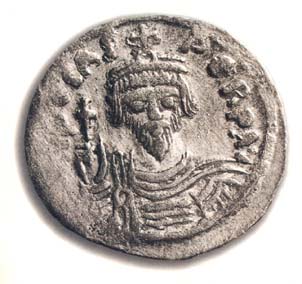Image Details

Israel Antiquities Authority
The emperor Phocas glares from the most recent of the 130 coins found in the Mamilla excavation. The latest coin is always a key indicator in a dig because, in a sealed context, it provides an approximate end date for events. Phocas reigned from 602 to 610 C.E., persuasive evidence that the bone burial at Mamilla was indeed related to the Persian conquest of Jerusalem in 614 C.E.
Phocas’s ascension to the throne following his overthrow of the ruling Byzantine emperor set in motion a series of bloody events in the long-running battle between the Byzantine and Persian empires. This particular skirmish ended with the temporary capture of Jerusalem by the Persians and the deaths of the unknown thousands of Christians memorialized at the Mamilla chapel simply as those of whom “God knows their names.”
